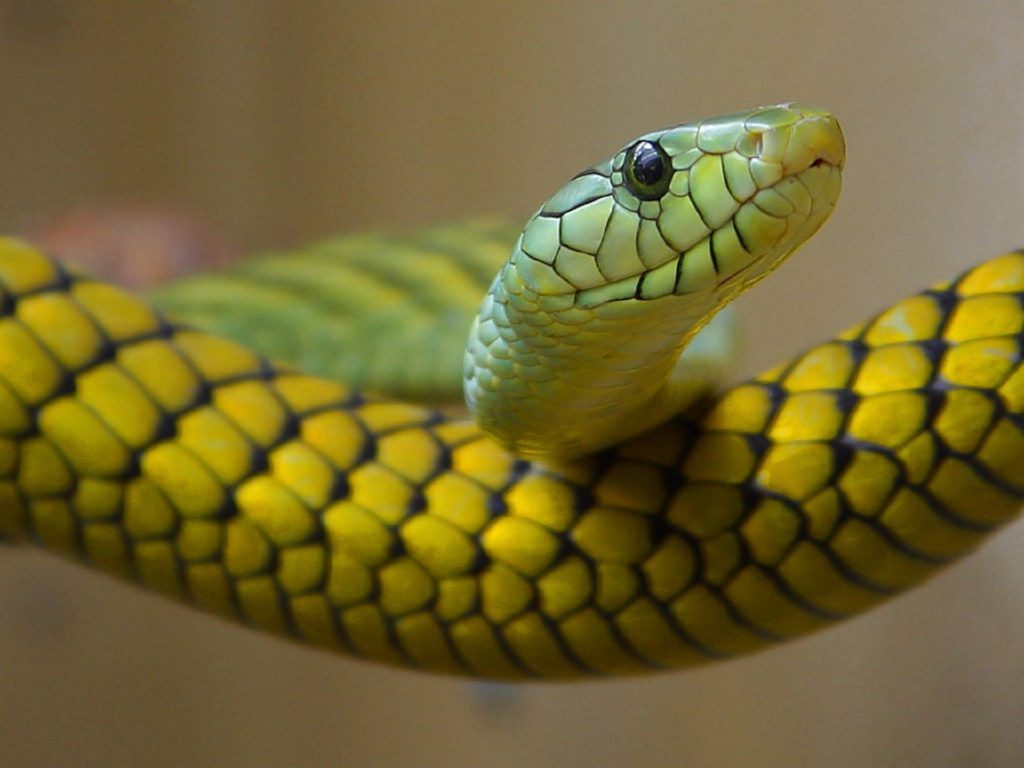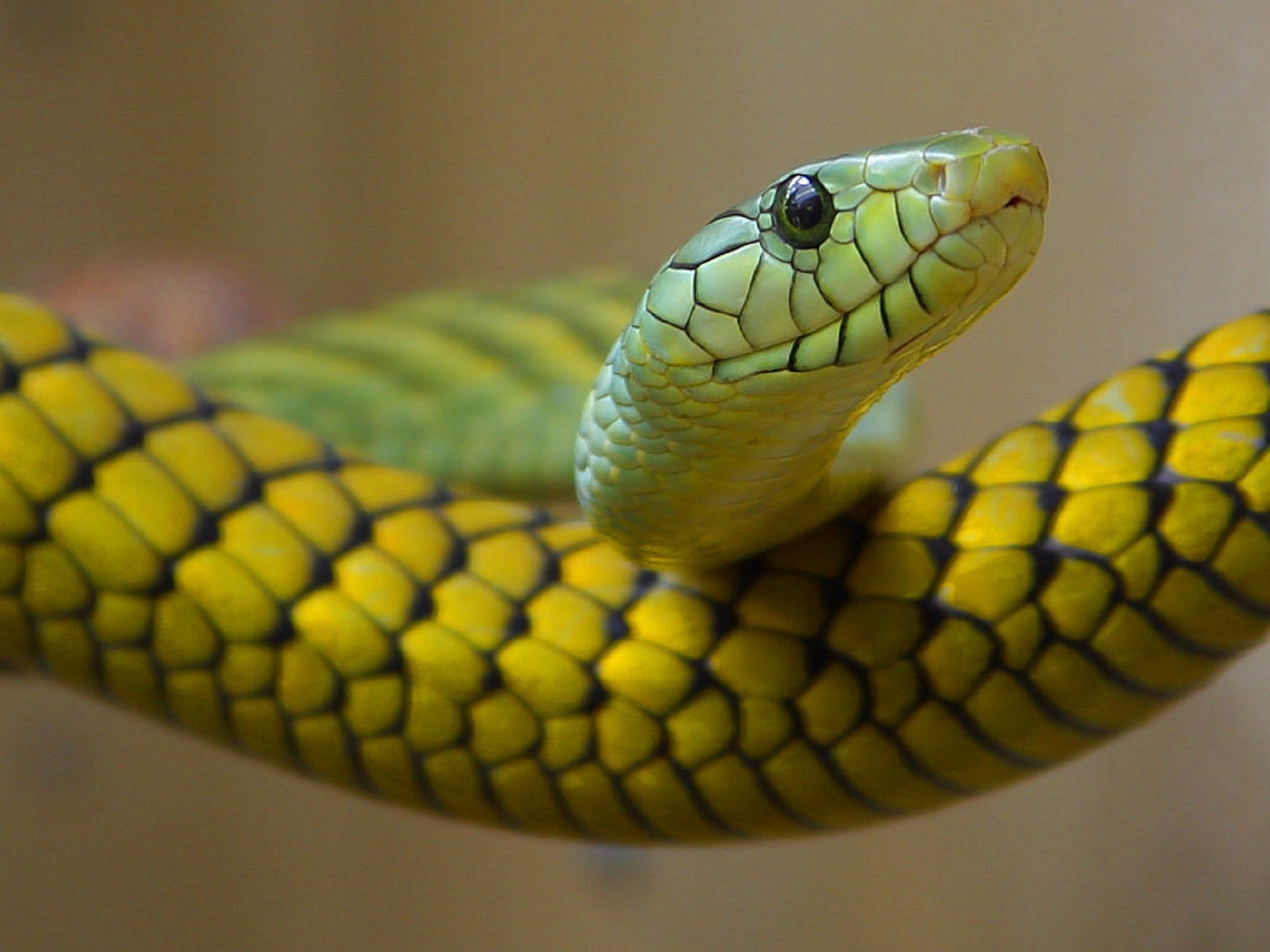ANIMAL: Western Green Mamba Dendroaspis viridis Type of Animal: Elapid Habitat: Tropical forest, thickets, woodlands, vegetated areas in cities/towns/suburbs, vegetated parkland, open forest, savanna, forest edges/clearings, scrubland Location(s): W Africa from S Senegal & S tip of Mali to SW Nigeria Appearance: Long slender snake, narrow elongate head, vivid yellowish green to green, yellow anterior scale margins, yellowish green to green head, more yellow on belly, round pupils, yellow brown iris Food/Diet: Birds, rodents, bats, shrews, tree pangolins, lizards, frogs, eggs Status in Wild: Stable Conservation: Breeding from zoos, reptile centers, & breeders Lifestyle: Solitary Additional Info: Called: Male Female Young-Snakelet Group-Solitary Weight: Male-1.4 lbs Female-1.5 lbs Gestation: 2.5-3 months Life Span: 12-15 years Body Length: Male-4.6 ft Female-6.9 ft Young-3.2 ft Tail Length: Male-0.98 ft Female-1.38 ft Young-7.68 in Main predators are raptors, pythons, & monitor lizards. Prefer trees but will descend to the ground to hunt. Venom is mix of neurotoxins (targeting nerve tissue) & cardiotoxins (targeting heart). Venom extremely fast acting. Strikes prey rapidly & often until it succumbs to venom. While growth decreases w/ age, never completely stops growing. Females lay 4-17 eggs. Also called the West African Green Mamba. When snake is aroused, it will flatten its neck. They have a very high metabolism. They tend to be active year round. Males neck wrestle w/ other males over females. These snakes rely heavily on vision to hunt. Often nest in mammal burrows in trees. Fun Fact(s): Can reach speeds of up to 7 mph. Babies highly venomous right at birth. Extremely dangerous due to highly potent venom, agility, & often, unpredictable temperament. However, they’ll flee if given choice. If cornered, they’ll hiss/strike repeatedly. Besides being fast & unpredictable, they’re also shy, alert, & nervous. While bites uncommon, majority of recorded bites have been fatal. Some bite fatalities have occurred only half an hour after being bitten. Symptoms of bites include local pain/swelling, diarrhea, headache, dizziness, vertigo, drowsiness, difficulty breathing, low blood pressure, & paralysis.

